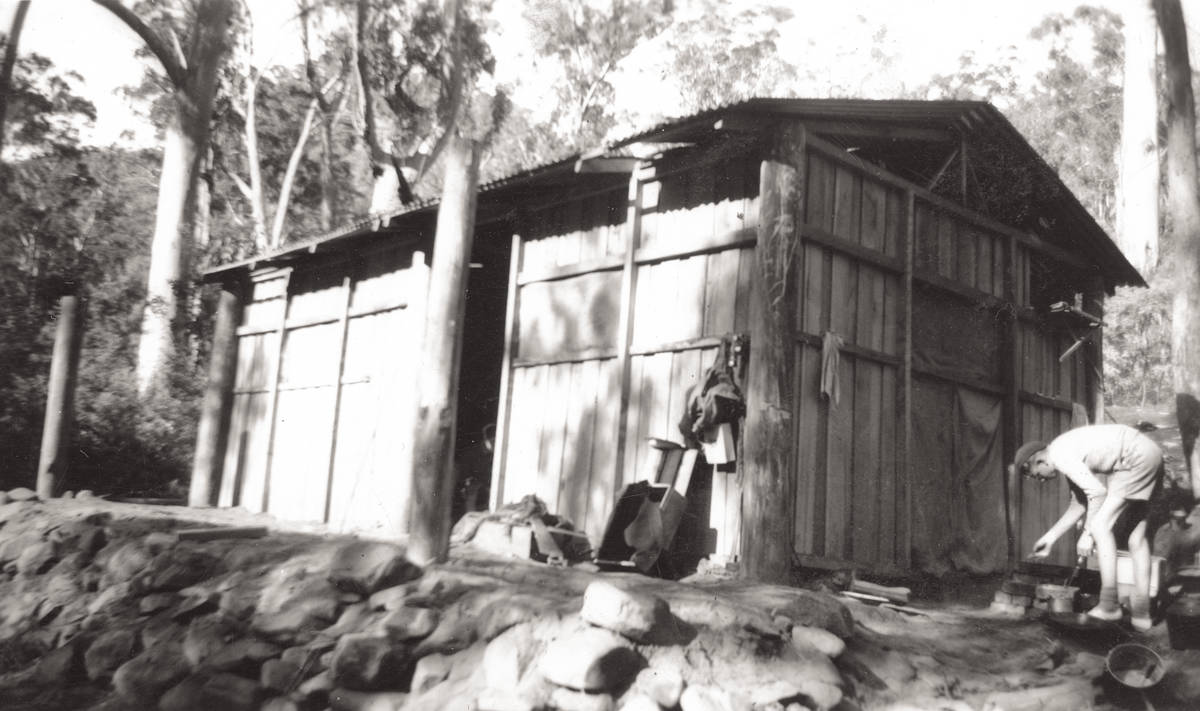heralded the commencement of the first Outdoor Education program in Australia. At the invitation of the owners of the land and under the guidance of teacher Gordon Jones, a class of fifth-form boys planned, designed and constructed a log cabin in the bush at the Chauncy Vale Wildlife Sanctuary, near Bagdad.
‘Alameda’— a Spanish word meaning ‘a place of trees’ or ‘a shady grove’— was officially opened in by Parents’ Association President, Marcus Gibson, by virtue of the Association’s generous contribution of £60. By the end of the year no less than 12 camps had been held there, with Headmaster Paul Radford himself joining members of the Natural History Club for two of them. Past student Richard Lord wrote about the Chauncy Vale cabin in :
25 ft long by 11 ft wide, the cabin had a fireplace at either end. A dirt floor and a galvanised iron roof with two skylights. It contained eight bunks in two tiers; excess students used hammocks or camp stretchers.
Writer and landowner Nan Chauncy sang Radford’s praises in an article for the journal Wild Life early in :
The object of this hut would, I think, have made our grandparents gasp with horror. Imagine allowing — indeed, ENCOURAGING — boys to have access to all the birds’ nests and secrets of the bush! More than this, to trust them as virtual guardians of its wildlife! A far-seeing headmaster intended to make in the sanctuary a base for the study of natural sciences and all bush lore.
Fifty years later, Richard Lord began work establishing a memorial at the site of the cabin, and on , a ceremony was held at Chauncy Vale and a plaque unveiled on a dry-stone cairn. Built to mark the site of the cabin burnt in a bushfire, it also celebrated a historic step in the education of young men.

